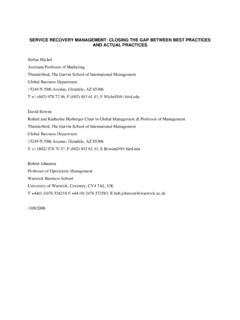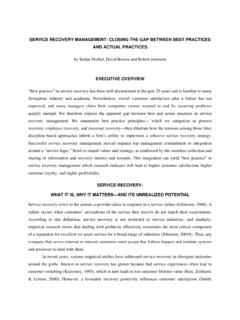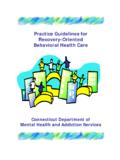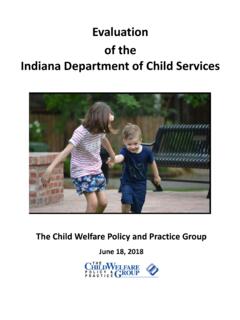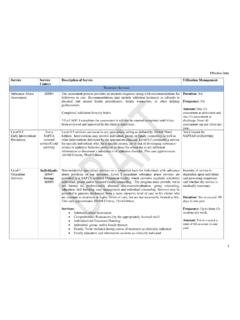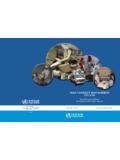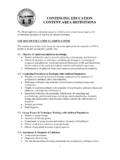Transcription of Exploring Service Recovery Paradox - Partner - News
1 This paper is accepted for AMA Summer Educators Conference 2002 in San Diego and will be published in the conference proceedings Exploring THE Service Recovery Paradox * Stefan Michel Hochschule fuer Wirtschaft Lucerne, Switzerland Service Recovery Paradox refers to situations where satisfaction of recovered customers actually ex-ceeds that of customers who have not encountered any problems with the initial Service . The grow-ing debate on the existence of a Service Recovery Paradox has not yet reached a conclusion. Based on interviews with more than 11,000 customers of a bank, our results lead to the conclusion that a very satisfying initial Service is what is most preferred. Nevertheless, a very good Service Recovery leads to higher overall satisfaction and more positive word-of-mouth intention than an error-free initial ser-vice which is just satisfying. * The study is supported jointly by a Swiss Bank, by the Commission for Innovation and Technology (KTI) of the Swiss govern-ment and by the Hochschule fuer Wirtschaft Lucerne.
2 Exploring THE Service Recovery Paradox ABSTRACT Service Recovery Paradox refers to situations where satisfaction of recovered customers actually exceeds that of customers who have not encountered any problems with the initial Service . The growing debate on the existence of a Service Recovery Paradox has not yet reached a conclusion. Based on interviews with more than 11,000 customers of a bank, our results lead to the conclusion that a very satisfying initial Service is what is most preferred. Nevertheless, a very good Service Recovery leads to higher overall satisfaction and more positive word-of-mouth intention than an error-free initial Service which is just satisfying. 2 Service Recovery Paradox Service Recovery has gained increasing attention in services marketing literature in recent years ( Tax et al. 1998; Smith et al. 1999; McCollough et al.)
3 2000; Andreassen 2001; Swanson and Kelley 2001). Since Service failure leads to negative disconfirmation and to dissatisfaction, it is suggested that appropriate Service Recovery can restore a dissatisfied customer to a state of satisfaction. A early definition of Service Recovery was suggested by Gr nroos (1988): Service Recovery refers to the actions a Service provider takes in response to Service failure. More recently, Smith et al. (1999) treat Service Recovery as a bundle of resources that an organization can employ in response to a failure. Service Recovery differs from complaint management in its focus on Service failures and the company s immediate reaction to it. Complaint management is based on customer complaints that may be triggered by Service failures. However, since most dissatisfied customers are reluctant to complain (Andreasen and Best 1977; Singh 1990), Service Recovery attempts to solve problems at the Service encounter before customers complain or before they leave the Service encounter dissatis-fied (Lewis 1996).
4 Both complaint management and Service Recovery are considered to be customer retention strategies (Halstead et al. 1996). The term Recovery Paradox (McCollough and Bharadwaj 1992) refers to situations where satisfaction and repurchase rates of recovered customers actually exceed those of customers who have not encountered any problems (Blanchard 1993; Oliver 1996). LITERATURE REVIEW The growing debate on the existence of a Service Recovery Paradox has not yet reached a conclusion. In one of the earliest studies concerning Service Recovery , Berry et al. (1990) found that Service qual-ity is highest when no failure happened. If a failure is resolved satisfactorily, about half of the loss on the satisfaction score can be recovered. Remarkably, this is one of the rare studies in the field that used actual customers (not students) as respondents, who evaluated a real-life Service encounter (as opposed to a written scenario) where dissatisfied customers and a control group were compared (not only complainers and non-complainers).
5 The existence of a Service Recovery Paradox was further denied (by Halstead and Page 1992; Brown et al. 1996; Boshoff 1997; McCollough et al. 2000, and Andreassen 2001) in various settings. Most of these authors conclude that there is no way to please customers more than with a reliable, first-time error-free Service . According to these findings, Service Recovery is considered a strategy to limit the harm caused by a Service failure rather than to impress the customer with a special effort when something goes wrong. Nevertheless, a positive impact of Service Recovery on dependent variables such as satisfaction, image, and loyalty is still suggested. 3 Based on almost 700 critical incidents from the airline, hotel and restaurant industries, Bitner et al. (1990) concluded that failures could be remembered as highly satisfactory encounters if they were handled properly. In summary, results of empirical studies on Service Recovery Paradox are not only contradictory but also difficult to compare.
6 Discrepancies result from differences in (a) research methodology, (b) the incidents in question, and (c) the dependent variable. (a) Using scenario-based experiments is common in studying Service Recovery (Boshoff 1997; Brown et al. 1996; Dub and Maute 1996; Kelley and Davis 1994; McCollough et al. 2000; Smith and Bol-ton 1998; Smith et al. 1999; Swanson and Kelley 2001; Webster and Sundaram 1998). Although external validity is claimed for this methodology, the Service Recovery Paradox effect may be under-estimated. Experimental situations are more cognitively controlled, and the respondents are not in-volved emotionally as they would be in real-life settings. Assuming that emotions do play an impor-tant role in Recovery situations (Dub and Maute 1995), respondents may conclude logically that a good Service in the first place has to be better than a recovered failure. Because of this logic, the term Paradox has been coined.
7 (b) The Service Recovery process starts with customer dissatisfaction and not with a customer com-plaint. Complaint handling is only one aspect of Service Recovery , since most dissatisfied customers do not complain (Andreasen and Best 1977; Singh 1990). If complainers are compared to non-complainers, Service Recovery Paradox is more likely to be found. It can be assumed that dissatisfied customers in the non-complainer group diminish overall satisfaction and loyalty, whereas complain-ers are often highly involved and may reward Service Recovery particularly well. Therefore, very suc-cessful complaint handling may exceed the increase in the level of satisfaction and loyalty above av-erage. Consequently, studies on Service Recovery Paradox should not be based on complaining cus-tomers, but on dissatisfied customers who must be compared to satisfied customers. (c) Several suggestions for the dependent variable of the Service Recovery Paradox have been put forward in the literature.
8 Some researchers argue that Service Recovery will impact satisfaction (Andreassen 2000; Boshoff 1997; McCollough et al. 2000; Smith et al. 1999), Service quality (Berry et al. 1990), loyalty (Chung and Hoffman 1998), repurchase intention (Halstead and Page 1992), positive word-of-mouth behavior (Swanson and Kelley 2001), image (Andreassen 2001), commit-ment and trust (Bejou and Palmer 1998; Tax et al. 1998), and combinations of those constructs (Dub and Maute 1996; Smith and Bolton 1998; Spreng et al. 1995; Webster and Sundaram 1998). Moreover, satisfaction as well as loyalty is not defined uniformly across the studies. Regarding satis-faction, either transaction-specific satisfaction or overall satisfaction is concerned. Loyalty, on the other hand, is measured as intended loyalty, word-of-mouth behavior, or repurchase behavior. 4 The following overview provides a comprehensive picture of the proposition that Service Recovery studies hold more dissimilarities than similarities.
9 SATISFACTION Satisfaction as a construct is commonly defined by the expectancy disconfirmation paradigm (Oliver 1980), by equity theory (Oliver and Swan 1989a), or by attribution theory (Weiner 1986). However, it is justified to focus on the expectancy disconfirmation paradigm, since it dominates the literature and is able to integrate the other two approaches (Stauss 1999). In the simple model suggested by Oliver (1996), satisfaction results from expectations and from dis-confirmation. If expectations are met or exceeded, positive disconfirmation leads to satisfaction. On the other hand, if expectations are not met, negative disconfirmation leads to dissatisfaction. In Service Recovery research, there is not just one but at least two evaluation phases. As Oliver (1996) puts it: Bear in mind, however, that Recovery is necessitated by dissatisfaction . Service re-covery starts, by definition, with initial customer dissatisfaction.
10 After this first evaluation, customers go through a Recovery process leading to a second evaluation. In a study with 410 complaining cus-tomers of an interstate moving company, Spreng et al. (1995) found that satisfaction with Recovery has more impact on intention and word-of-mouth than satisfaction with the initial Service . Parasuraman et al. (1991) argue that Service -failure situations tend to raise customers adequate ser-vice level temporarily, thereby narrowing the zone of tolerance. The Service Recovery process is im-portant because of lower expectations and higher zone of tolerance. Additionally, a study by Andreassen (2000) revealed that disconfirmation rather than expectations have a dominant impact on satisfaction. The impact of Service Recovery performance on satisfaction is assessed on two different levels. Ser-vice Recovery affects encounter satisfaction (McCollough et al. 2000; Smith et al.)
